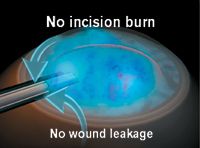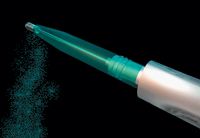Article
Fluidics play role in improving safety, efficacy of phacoemulsification
Washington, DC—Cataract surgery has improved in terms of safety and efficacy with the introduction of phaco, foldable IOLs, and the use of smaller incisions. With a better understanding of fluidics —infusion and aspiration—surgeons will continue to improve the safety and efficacy of phaco.

Graham D. Barrett, MD, FRACO, who delivered the Binkhorst Lecture during the opening session of the American Society of Cataract and Refractive Surgery annual meeting, explained that he became interested in the underlying mechanisms of phacoemulsification, which improved safety and efficacy, and therefore focused on this aspect of cataract surgery for this year's lecture.
In the 1980s, when he began practicing cataract surgery, the recommended incision size was 3.2 mm, which could lead to wound leakage, impaired chamber stability, and an increased risk of rupture of the posterior chamber.
Basic principles To avoid shallowing or collapse of the anterior chamber during phaco, the fluid infusion must be greater than the vitreous pressure and atmospheric pressure. Pressure in the anterior chamber is dependent on the bottle height minus the drop of pressure due to resistance in the infusion, Dr. Barrett noted.
"Resistance in the infusion line varies with the fourth power of the smallest diameter in the line," he explained. "Therefore, it is dependent on the cross-sectional area for infusion of the coaxial sleeve and needle or infusion cannula at the incision site."


Dr. Barrett also explained the advantages of a Venturi pump system for the aspiration of fluid during phaco. Vacuum is created within the cassette and flow in the aspiration tubing is dependent on the vacuum.
"So the time taken to reach a required vacuum is almost instantaneous and more predictable (than with the peristaltic system)," he said. "This type of time/vacuum relationship is preferable in the system that allows the surgeon to control vacuum and ultrasound simultaneously. With dual linear control, the required amount of energy and aspiration can be varied in real time during surgery to remove the nuclear material."
Newsletter
Don’t miss out—get Ophthalmology Times updates on the latest clinical advancements and expert interviews, straight to your inbox.




